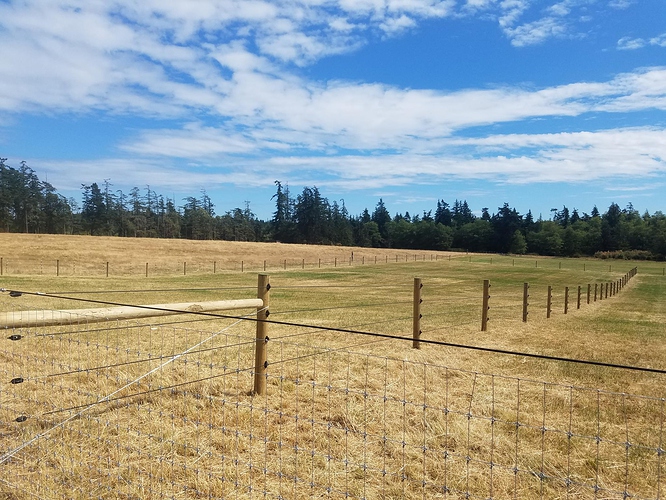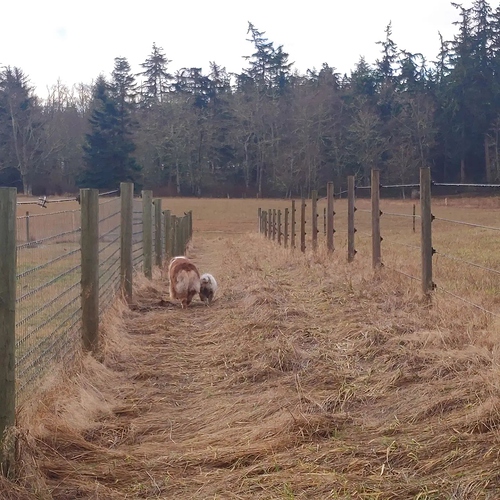I must admit that we don’t have top rails here, at this farm in our large pastures. I was concerned about it at first. And the fences are barbed wire, on these large pastures. It’s 160 acres in all, and there are cows all around us, so barbed wire is pretty much necessary to keep cows from breaking IN. Where I have or have had neighbour’s horses over these fences at least at some times of the year, I have added an electric wire on our side of the fence. This acts as an adequate deterrance to keep my horses away from getting mixed up with fences. But these pastures are LARGE, and once they know that the electric wire is there, they do not go near the fence, or test it.
If you are going without a top rail to mark the fence, you need another type of aversion to the fence to keep horses away. They only chew a top rail, anyway. On our “farm fence” fences, which is also wire, but squares, not barbed, a top rail is necessary, because they will lean on wire like this, stretch it, and can get tangled up in it that way. They don’t with barbed wire. Also, without a top rail on our non barbed “farm fence” wire, the deer jumping it, hitting it, and horses leaning over it was rapidly breaking it all down, so we had to add the top rail or else it was all going to be destroyed. I added an electric wire on that wooden top rail to keep it from being chewed. Barbed wire is actually a lot like electric… once they poke themselves once, and know where the “perimeter” is, they know it “bites”, and give it more respect than many other types of fencing. If your pastures are large, they don’t need to get too close to it. They do respect it.
Good luck with your decisions. You pay your money, and make your choices. There are always risks, involving horses, and fences. The worst injury we have had was with a five rail wooden plank fence, completely destroyed by a cast horse. Horse was also permanently damaged, as a weanling. He’ still here, at 18 years old, a pasture puff.
PS. If you add an electric wire on top of any “non” wooden plank fence to deter horses from leaning on them or coming near them, run the wire BELOW the top of the fence if you also have deer. Because the deer will take the electric wire down, break it, and short it out if it is the top wire on your fence.






 ).
).